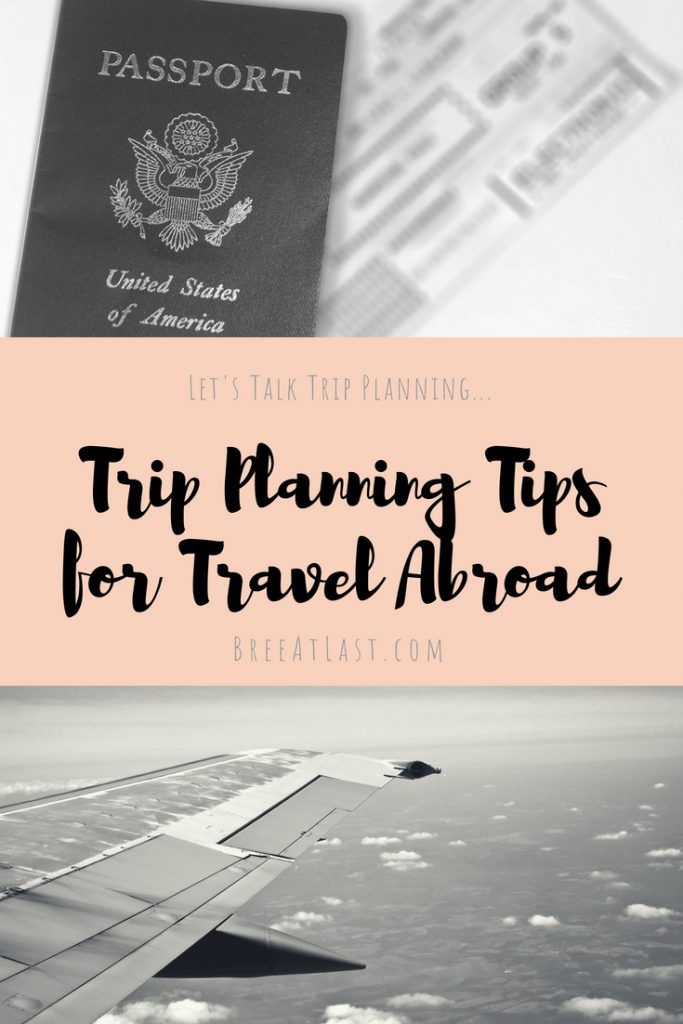 Let’s talk about my (and most everyone else’s) favorite topic: traveling. This is going to be geared toward the more inexperienced traveler who may be overwhelmed at the notion of arranging an adventure abroad on their own. If you fall into the seasoned traveler category, this post is probably not going to be very intriguing, unless you’re just curious and would like to compare notes;) Either way, welcome!
Let’s talk about my (and most everyone else’s) favorite topic: traveling. This is going to be geared toward the more inexperienced traveler who may be overwhelmed at the notion of arranging an adventure abroad on their own. If you fall into the seasoned traveler category, this post is probably not going to be very intriguing, unless you’re just curious and would like to compare notes;) Either way, welcome!
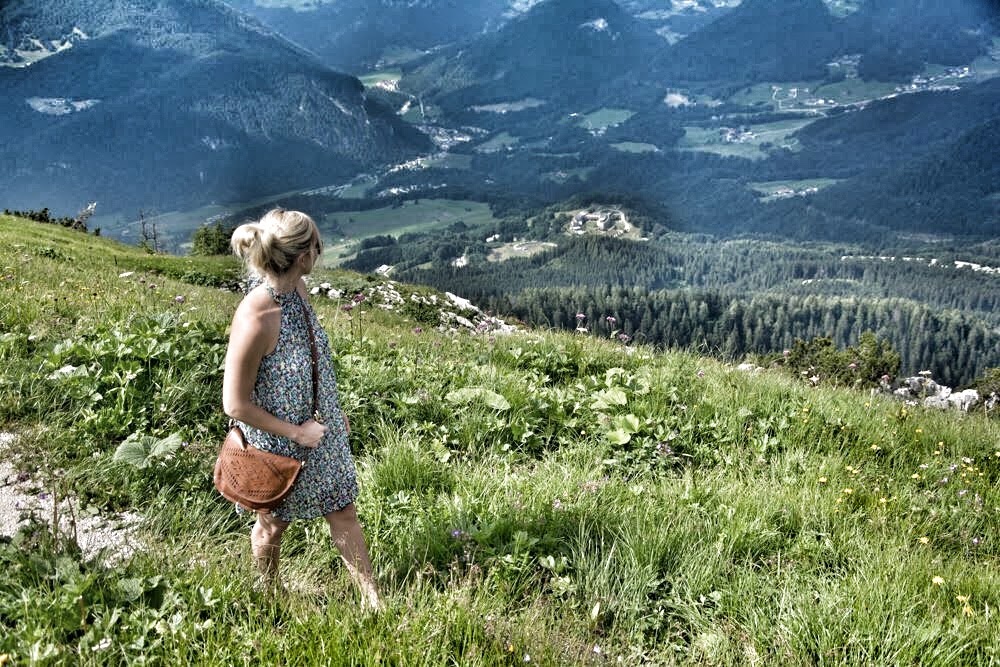
Berchtesgaden, Germany/Photo Cred: my hubby
First, here are a few little tidbits about the hubby and I…
Generally, we try to take two vacations abroad each year (wish it were more, right?:)). Usually, a 17ish night trip during the summer, and an eight night trip sometime during the winter months (anything shorter is too short in my opinion). After each of our vacations abroad, I’ve always had friends or acquaintances ask me for my travel agent’s contact info, presumably because they figure my agent knows a thing or two about putting a well-paced, interesting, and enjoyable vacation together. Fun fact: it’s me, myself and I who pieces this logistical puzzle together. Admittedly, I’m a bit of a control-freak, so I wouldn’t have it any other way, and I absolutely LOVE planning. Well, at least the fun stuff like party planning and trip planning;). I’m a huge procrastinator with everything else in my life and sort of ‘wing it’ in the not-so-fun areas, but I digress….
Now back to trip planning.
There are some cardinal rules of travel that I’ve garnered through my own experiences, and through the advice of other travelers. I try my best to implement these six so-called rules whenever possible, and they are as follows:
Have a plan…
This seems obvious, but I see the opposite occur all the time among other travelers. Sure, it sounds freeing to buy a plane ticket to some exotic place and just sort of fly by the seat of your pants, so to speak, but this is usually a bad idea and leads to frustration and a poor use of hard-earned vacation time.

Prague, Czech Republic/Photo Cred: my hubby
Be flexible…
While I insist on having a plan, it’s also important to realize you don’t have to stick to it if you don’t feel like it. By having a plan you’ll know how any day-to-day changes will affect the rest of your time, and what you’ll realistically be able to accomplish. I make a loose itinerary for every trip based on things we REALLY want to see, things we’d like to see, and things we might try to see if time permits or we need a back-up plan due to unforeseen circumstances (e.g. inclement weather, museum closures, etc).
My itineraries start out old school – I simply print a blank calendar and pencil in tentative plans for each day based on hours and/or days of operation (many museums are closed Sundays and certain weekdays, or close early on specific days), and based on guided tour times. In many cases, a guided tour, or lack thereof, can really make or break ones experience at a particular sight, so we try to plan our day around any highly rated tours, especially the free kind, as best as possible.
Writing this information out on a calendar really helps keep expectations in check and assists tremendously with time management and factoring in accurate travel times between destinations. From experience in trip-planning with friends, our sightseeing goals are always extremely ambitious, but as soon as we begin penciling plans into my trusty blank calendar we start reigning in our goals dramatically.
Making an itinerary doesn’t have to be a chore. Often we begin the process over brunch (the all-day kind of brunch where mimosas are served;)). Will you end up seeing everything that’s written on your itinerary? Maybe, but most likely not. This isn’t necessarily a bad thing. Usually it’s because goals or interests have changed mid-vacation….or you may decide you just want to drink wine all day at your new favorite Parisian cafe and practice your french language skills with your very patient server, and that’s completely okay. It simply gives you a reason to come back. So always assume you’ll return one day and leave yourself some sights to explore when that time comes.
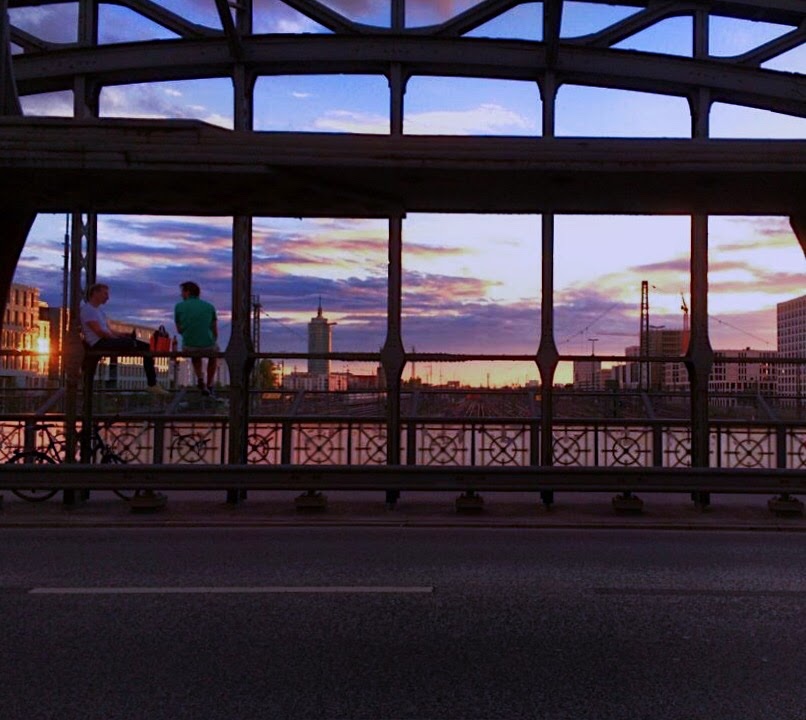
Munich Train Track Hub | Photo Cred: me and my iPhone
Travel by land or sea…
Ideally, the only two times I want to hop on a plane is when I’m leaving the U.S. to head abroad, and when I’m leaving my final destination to return to the U.S. In my experience, airports are the number one killer of good vacation vibes, so try to avoid flying in the middle of your trip. You’re not going to see everything on your bucket list in one fell swoop, so don’t exhaust yourself trying. As mentioned above, always assume there’s another trip on the horizon, and instead try to (figuratively) conquer the world by region.
Sometimes breaking this “cardinal rule” is simply unavoidable, as train or other ground travel is not always the most efficient method, even when traveling within a specific region. For instance, we recently traveled through Northern Europe and ended up having to take two flights to save time (Stockholm to Bergen, then Bergen to Copenhagen a few days later). While it saved time, it also made our vacation a little less enjoyable, but due to the landscape in this part of the world, flights were our best option in this case.
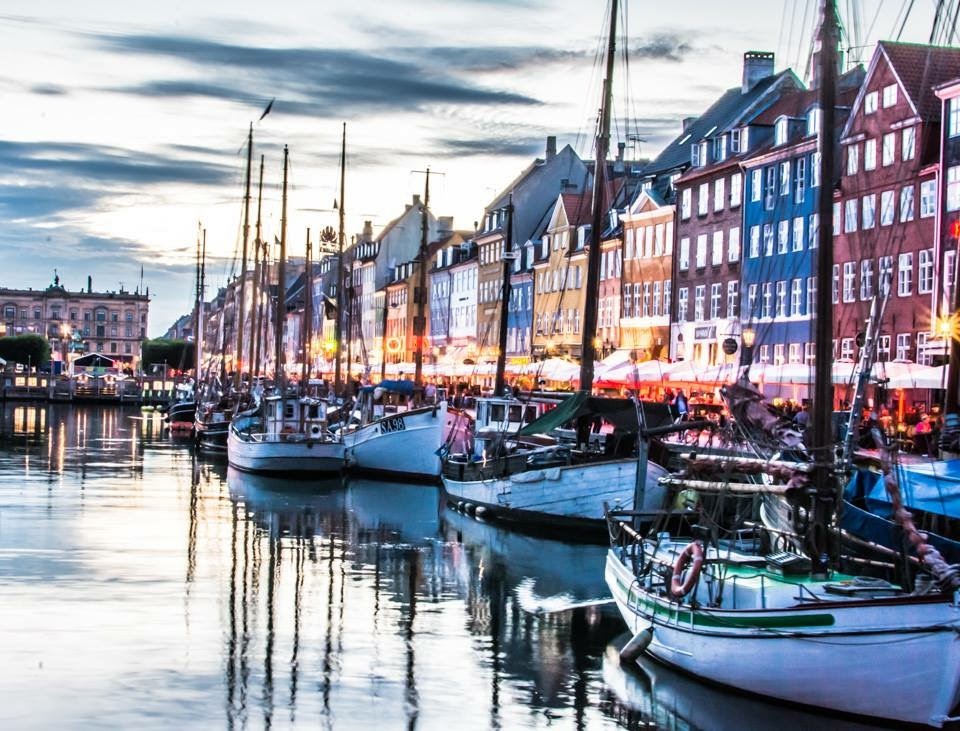
Nyhavn-Copenhagen, Denmark/ Photo cred: hubby
Two night minimum…
Try not to stay anywhere less than two nights, even if it’s a small city with few attractions, and you think you can tackle it in a day and move on. Check-in procedures and exhaustion usually put a damper on such an ambitious plan, and make the time spent there rushed and less pleasant.

Saint Tropez, South of France/Photo Cred: my hubby
Travel Books are our friends…
When I was in college, my boyfriend and I went on a trip to Costa Rica without doing any research, without a travel guide on Costa Rica, and without booking accommodations in advance. What idiots were we?! It was an eight night trip and we wasted sooooo much time trying to figure out what we wanted to see. We didn’t have any sort of travel guide to tell us about the attractions….heck, we didn’t even speak Spanish!! We probably drove right past some pretty amazing stuff because we were clueless about what Costa Rica had to offer, but we sure thought we were cool….that is, until we stepped off our plane at San José International airport and reality set in.
On the same note, I saw a funny photo posted by one of my Facebook friends of the Arc de Triomphe in Paris along with a caption explaining that the “ONLY” way to actually get out to the Arc de Triomphe is to dodge the cars in the multi lane (using the term “lane” very loosely here) traffic circle surrounding the monument. For those who have seen this traffic circle on the Champs-Élysées, you know crossing it on foot would be a death sentence. There were several other signs that this couple did not use any sort of travel guide, but I couldn’t help but chuckle that they didn’t realize there’s an underground pedestrian walkway that takes you right to the monument, and it’s unfortunate they didn’t get a chance to see it up close or visit the Tomb of the Unknown Soldier.
I’m a bonafide grown up now, whether I like it or not, and my time is more valuable than ever, so I’ve come to rely on travel books and Rick Steves’ guides continue to be our favorite. His books are especially helpful for time saving tips. Sometimes it almost feels wrong being able to skip the hour(s) long lines to enter Hohenschwangau Castle in Bavaria, Saint Mark’s Basilica in Venice, or taking the lesser known entrance right into the Louvre with the pre-paid Paris Museum Pass, but his time-saving hacks are published for all to see, you just have to do a tiny bit of reading ahead of time to take advantage of them.

Neuschwanstein Castle- Schwangau, Germany/Photo Cred: hubby
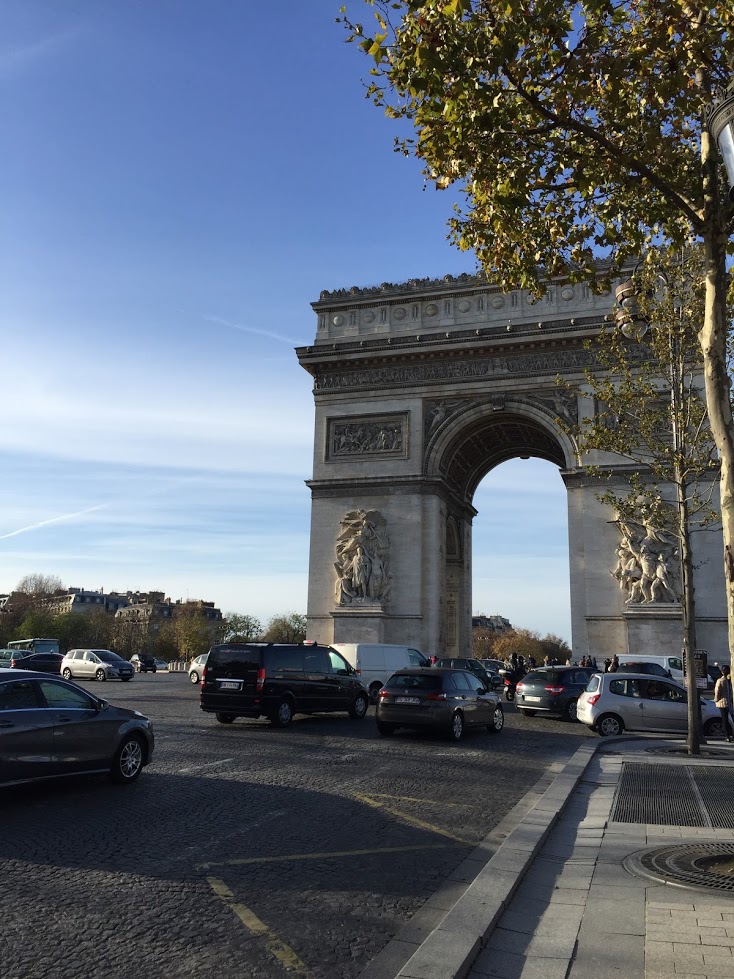
Arc de Triomphe/photo cred: me
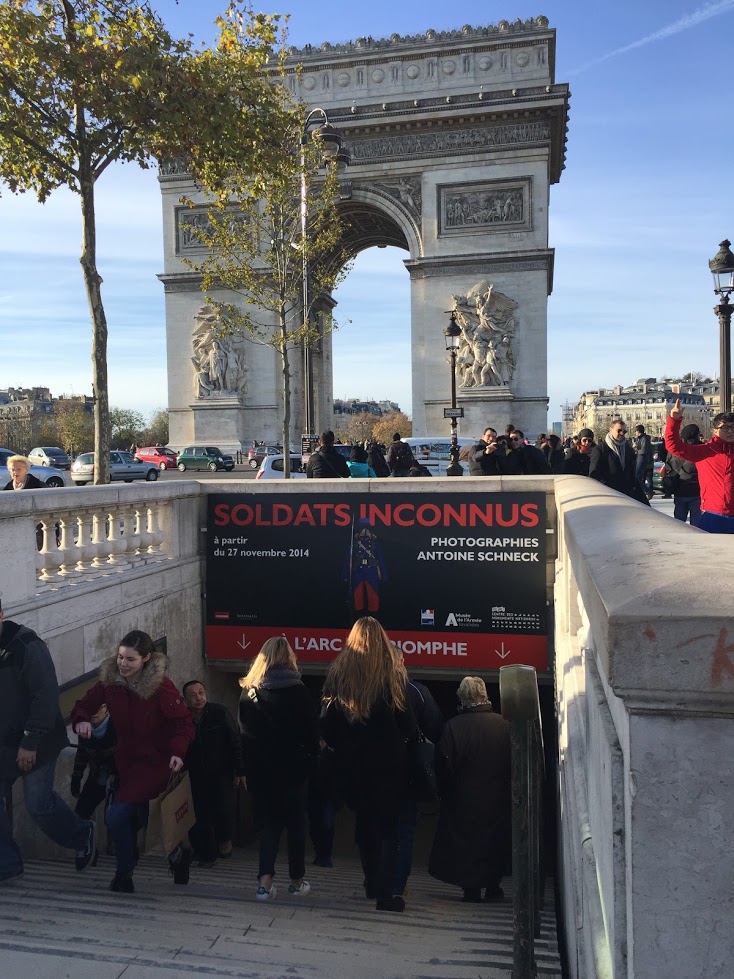
Pedestrian Tunnel to the Arc de Triomphe/Photo Cred: me
Vacation rentals over hotels…
Lastly, if staying at any destination for at least two nights, go for the highly reviewed Airbnb accommodation, rather than staying at a hotel. There are often minimum stay requirements anyway, but the reason I say two nights is sometimes the check-in/out procedures at certain Airbnbs can be a bit more complex than checking in at your average hotel; so if you’re just popping in a small town for one night on a brief stopover between destinations, it’s best to save time wherever you can. We try to stay at Airbnbs whenever possible, as they’re usually a much better value, easy to book and pay through their website, and provide a more authentic experience. Most European hotel rooms are quite small, and if they’re not small they generally come with a hefty price tag as well.
During our first trip to Croatia a few summers ago, my husband and I had our best Airbnb experience to date. Our host, who was temporarily staying in the ground floor unit of our beautiful flat on Hvar Island overlooking the harbor, invited us to join him for a cookout with another couple who were visiting him from Germany (our host had attended college with the gentleman from Germany back in the 1970s). We didn’t want to impose, so we had no intention of joining; but when we were on our way ‘home’ from dinner that night, they warmly convinced us to partake. So there we were, sitting under the stars and smelling the salty Adriatic Sea air, on the most gorgeous summer night at his outdoor kitchen. We had the most interesting conversations while sipping on wine and helping out with the meal prep slicing local tomatoes, fresh mozzarella, and of course the most delicious fresh bread…then we scarfed down our SECOND dinner of the night like a couple piggies. The best way to describe this experience is it felt like I was in a highly acclaimed foreign indie film. It remains one of my most magical vacation memories; and the reason I continually research real estate law for foreign investors in Croatia;)
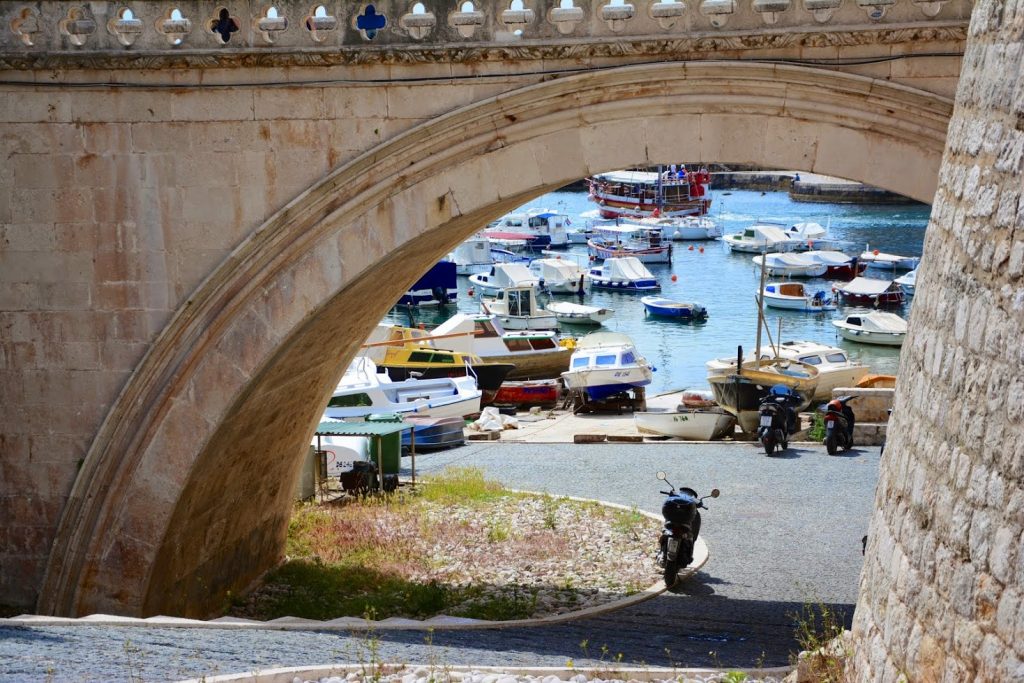
Dubrovnik, Croatia | Photo Cred: My Hubby
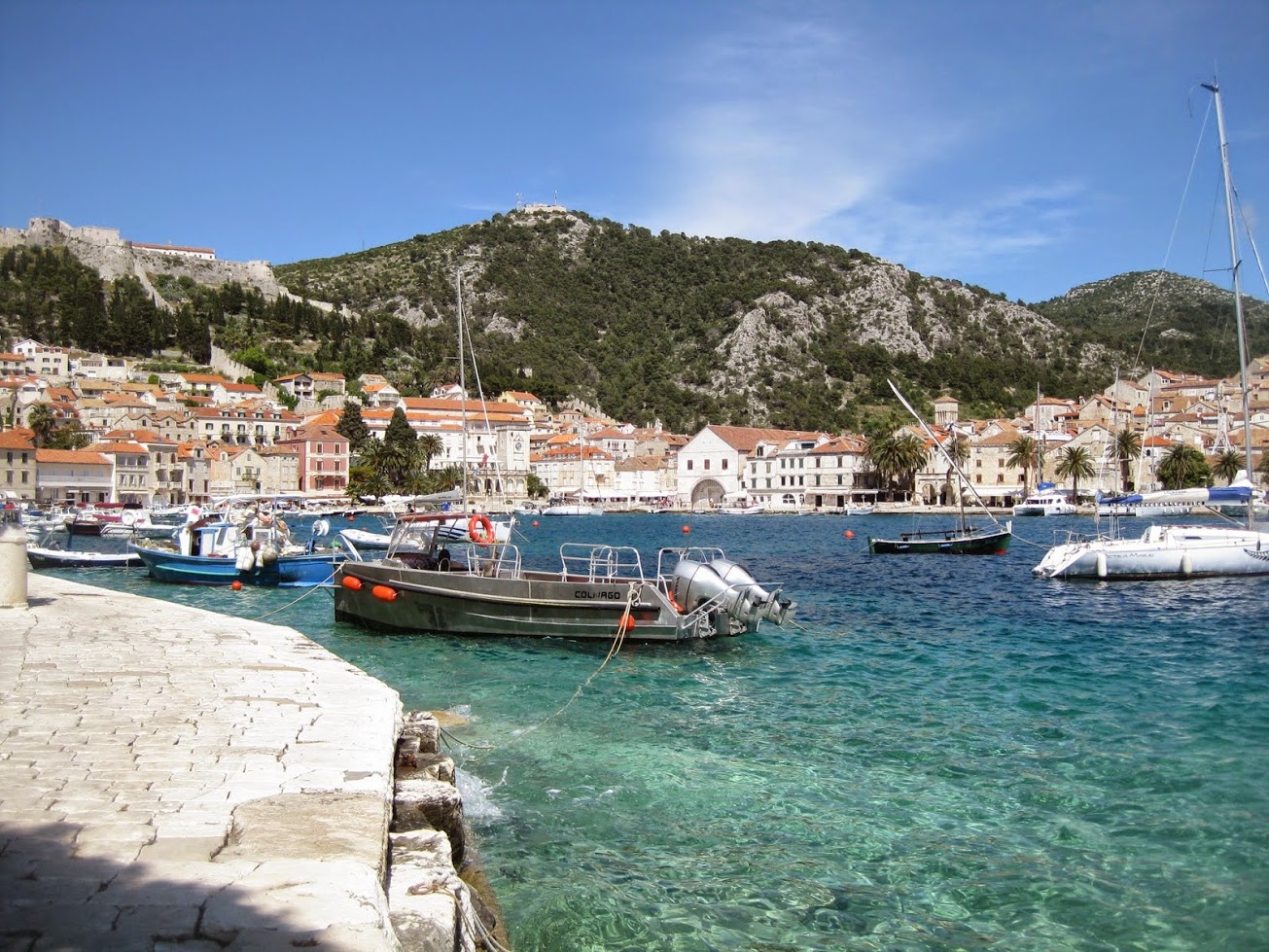
Hvar Island, Croatia/ photo cred: me
Well, that about sums up our travel philosophy. Now, how to get started with an itinerary…
Of course first thing’s first, and that’s deciding on the dates you’re able to travel and marking them on your trusty blank calendar. During the summers when we take our long (by American standards) trip, we usually fly out on Friday, then return two weeks later on Sunday, and drag ourselves to work Monday. The jet lag usually works in our favor upon our return if we’re traveling home from Europe, as we’re naturally waking up ridiculously early Monday, and you gain time on the flight back, so you can generally arrive home at a decent time Sunday evening. Some people may want a day to recover before going back to work, but no matter what, going back to work after vacation sucks, so you may as well stay on holiday as long as possible. I’ll sleep when I’m dead, right?

Saint Matthias Church-Budapest, Hungary/Photo Cred: hubby
Once dates are set, figure out where you want to go. Obvious, I know, but there are a few factors to consider. What time of the year are you traveling? Is it November and you want to travel to Scandinavia? That’s probably not the best time of the year for travel there, unless you’re looking to freeze your buns off and see very little sunlight. Of course if your intent is to see the Northern Lights, then by all means book your igloo and enjoy;) When we’re traveling in the summer, I try to end our trip at a more relaxed pace somewhere on the coast. So we may start out in the bustling city of London, but end the holiday in the South of France relaxing on the beach in St. Tropez. If you do want to spend the latter part of your holiday lounging on the beach in the South of France, or Croatia’s Istria Peninsula, make sure you check out their average temperatures during the dates of your travel, as it can still be quite chilly in late May/early June.
I begin this part of the planning process by having one or two destinations in mind, then I typically just lay in bed leisurely looking at my iPhone map app to see what other potentially interesting destinations are in the region, or easily accessible by public transportation (hint: an overnight ferry ride can get you surprisingly far, and your accommodations are also covered for that night). Or if we’re traveling with another couple, this is when one of those all-day brunch outings for planning purposes occurs;)
Next, I start googling like an utter maniac for information on TripAdvisor, or other travel forums to figure out the general consensus on which cities or sights are worthwhile, and how many days should be spent at each destination in order to do it justice, so to speak. This will be very subjective reading, which is why it’s best to gather as much information as possible to weed out the outliers.
Nearly all of my seemingly off the wall questions have been asked before, so I can almost always find the answers I’m looking for (e.g. How many nights should I stay in Helsinki? What’s the best way to get from Ljubljana, Slovenia, to Rovinj, Croatia? Are there ferries from Italy to Dubrovnik, Croatia? What’s the best beer tour in Prague? Where are the best wine tastings in Paris? Do I need a visa to visit Russia? What’s the best area to stay in Munich? etc, etc…. you get the idea.) This process usually takes me a week or so before I settle on a (mostly) solid game plan.

Tallin, Estonia: photo cred: hubby

Tallin, Estonia/ Photo Cred: me and my iPhone
Have a rough itinerary? At this stage by ‘rough itinerary’ I mean the destinations have been chosen, you know the dates you’ll be in each location, and you’ve calculated how much time it will take to get from one destination to the next. Now we can book flights. A common traveler error I see is the booking of a round-trip flight through the same airport, rather than booking a flight into ones first destination, and then booking the flight home from the final destination. Make sense? It usually only costs a couple hundred dollars for this convenience, if it even costs extra money at all, but it is well worth the potential extra cost for the efficiency and flexibility it allows when making an itinerary (e.g. it would be silly to start a holiday in London, travel to the French Riviera, then have to make the trek alllll the way back to London to board a flight home, but there are people who try to do this to save money, or because they don’t realize that can book a multi-destination flight).

Stockholm Archipelago, Baltic Sea/Photo Cred: Hubby
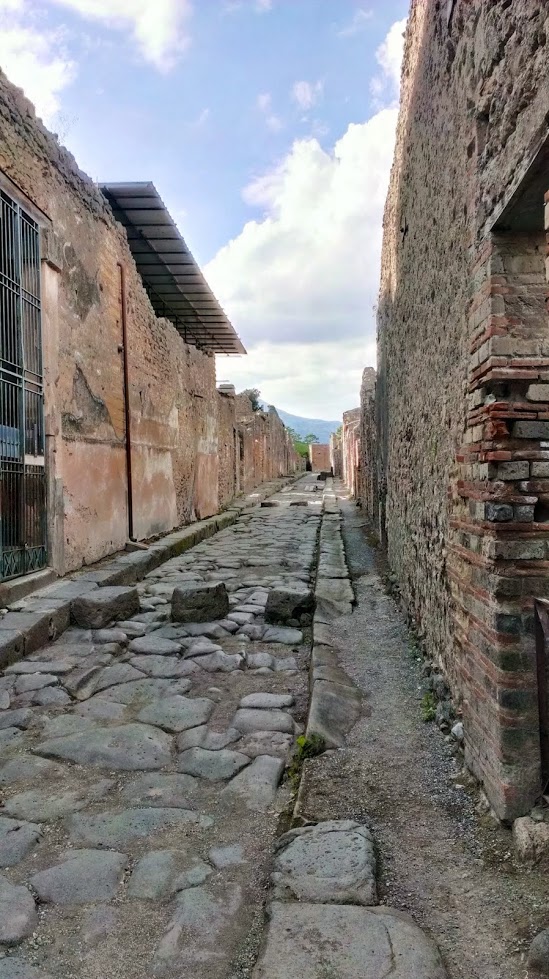
Pompeii Ruins, Italy/Photo Cred: hubby (Pro tip: go in the afternoon when all the tour groups have left. You’ll practically have the place to yourself.)
Of course, next comes lodging. If you can’t tell already, we are HUGE fans of Airbnb. We’ve only had two not-so-great experiences with Airbnb rentals, and we’ve stayed in well over a dozen at this point, and the issues were relatively minor (TV never worked, despite the host sending out a repair man….twice, but we were in Paris, so who needs a TV anyway? The second issue was a lack of toilet paper, which wouldn’t have been a big deal, except the nearest convenience store in Salzburg closed very early, so we had to take a bus to find a store that was open for business).
Whether you’re staying in a hotel or vacation rental, check out the reviews before booking to be sure there aren’t any major complaints about any particular place (lack of sleep due to a noisy street, or club beneath the flat; poor proximity to popular sights; dirty bathroom; unreliable host; complicated check in procedures, etc). When booking through Airbnb, I always message the hosts before booking to be sure they will allow us to drop off our luggage immediately upon our arrival in the city, as sometimes check in is not until 3pm, so if we’re arriving at 10am, we certainly don’t want to have to sit for several hours waiting to ditch the luggage. Usually this is not an issue. Actually. I can’t think of a single time a host did not accommodate our request to either check in early, or at least drop off our luggage early. Often times, your host is your best source of logistical support prior to arrival, and many will even arrange transportation from the airport at a discounted flat rate. If they don’t arrange transportation, or if transport is not needed, they’re usually helpful in giving very detailed directions to the rental property, and may also help you calculate your arrival at the rental time based on your flight’s arrival time.
Be mindful that your host will review you as a guest at the end of the stay, so I go out of my way to be courteous, even if there’s an issue, and make sure to leave the property in good order. When we first began using Airbnb, I had one host in Croatia whom I thought I had great rapport with, who later reviewed me and warned other hosts to “be prepared to answer a lot of questions” haha. It was overall positive, but a very blunt review. I think partly due to english not being his first language. I believe I’ve since struck the perfect balance of pre-booking communication, as I haven’t had any further complaints….knock on wood.;)
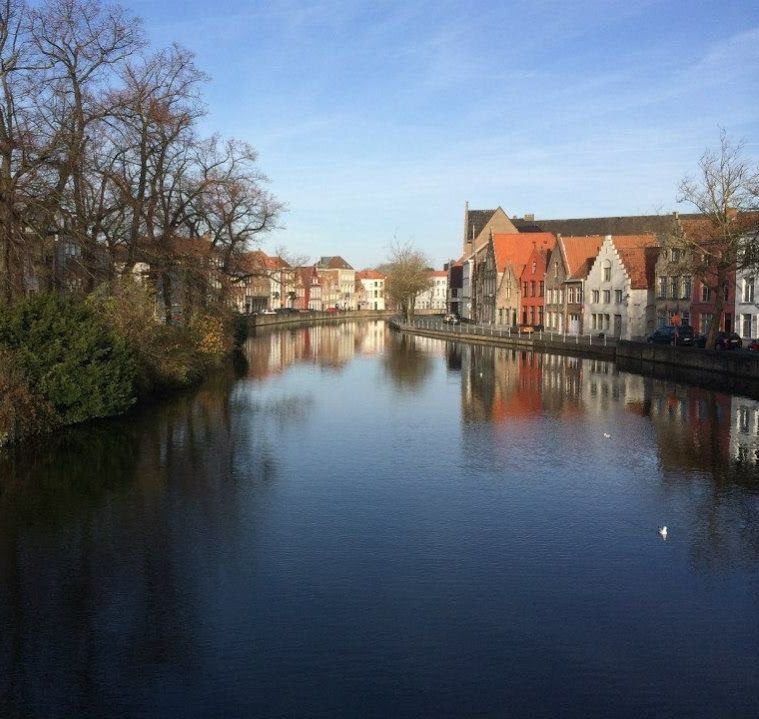
Bruges, Belgium/Photo Cred: me
The remainder of the planning is the fun, albeit slightly tedious part, and that’s the fine tuning of the day-to-day stuff. This is when you really dive into your travel guides and start figuring out the most optimal use of your valuable vacay time. If we’re traveling with friends, I’ll ditch the paper calendar for a shared google doc (with a calendar, of course;)) so everyone can input their ideas and be a part of the planning process. I’ll have my travel guides on my nightstand, along with a highlighter, and my husband and I will take turns reading to each other about the sights that sound interesting. Our vacations abroad are generally scheduled one to two months out, which gives us plenty of time to plan a great adventure.
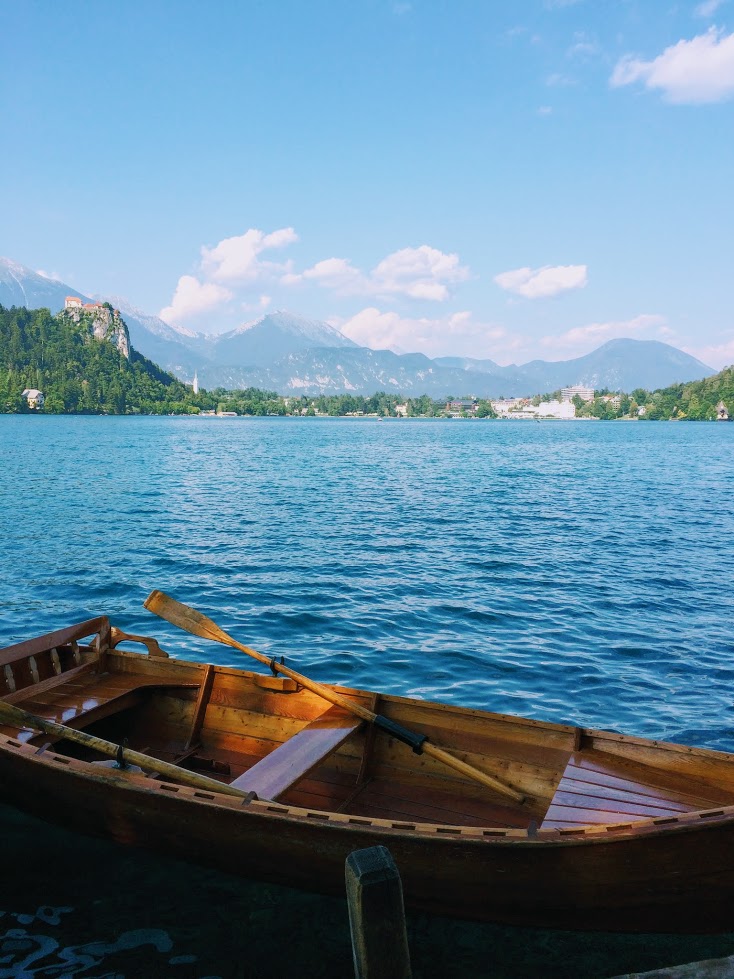
Lake Bled, Slovenia/Photo Cred: hubby

Flåm, Norway/Photo Cred: my hubby
Now don’t ask me anything about how to pack properly, as that is an art I have yet to master haha. I usually begin packing a month in advance, if that tells you anything.;)
If you’ve made it this far, thank you for reading:) I absolutely love talking travel, so I’d love to help any of you who may be feeling a bit overwhelmed about planning your first trip abroad.
Bon Voyage!

Leave a Reply